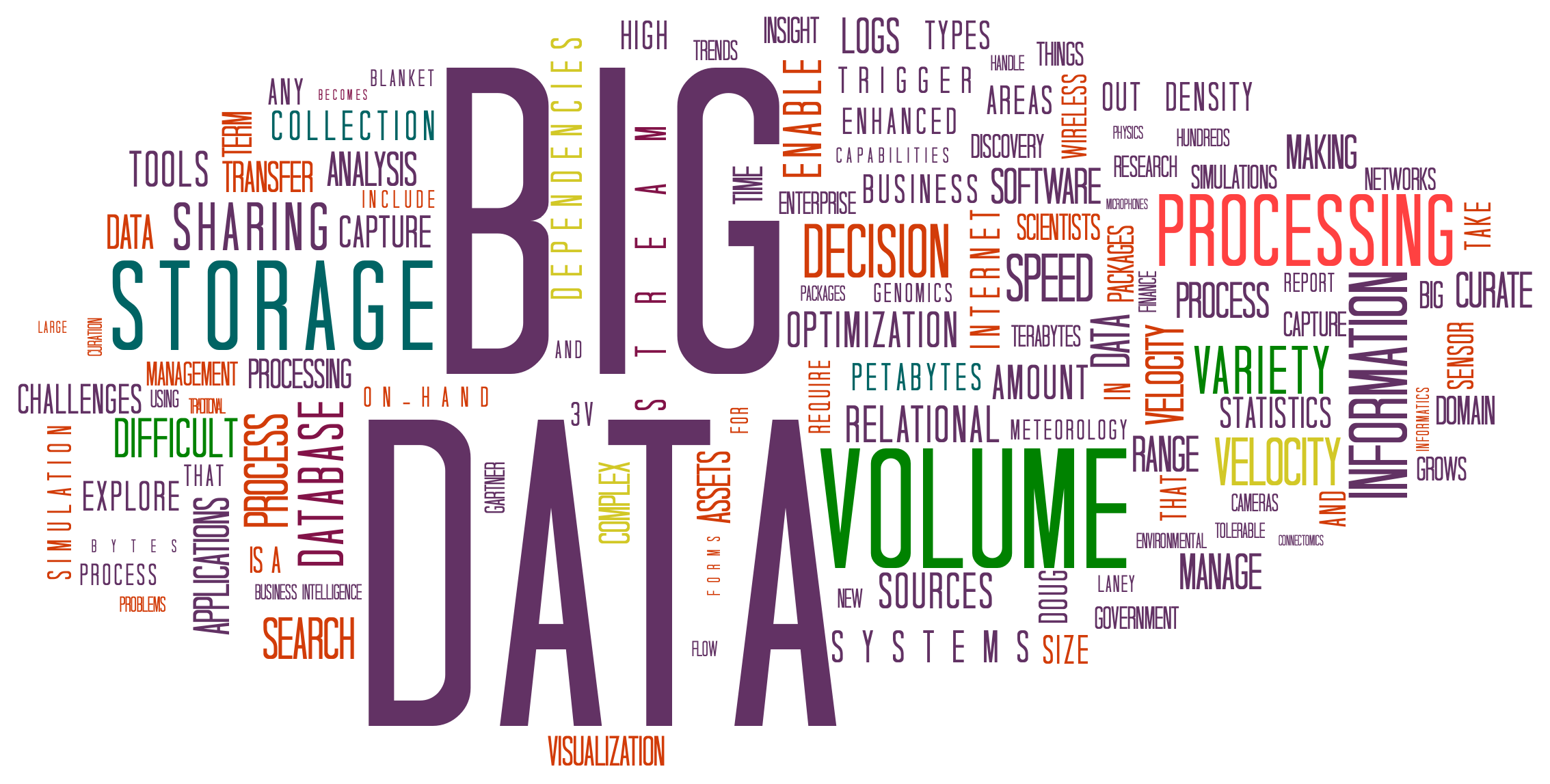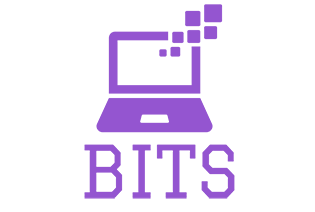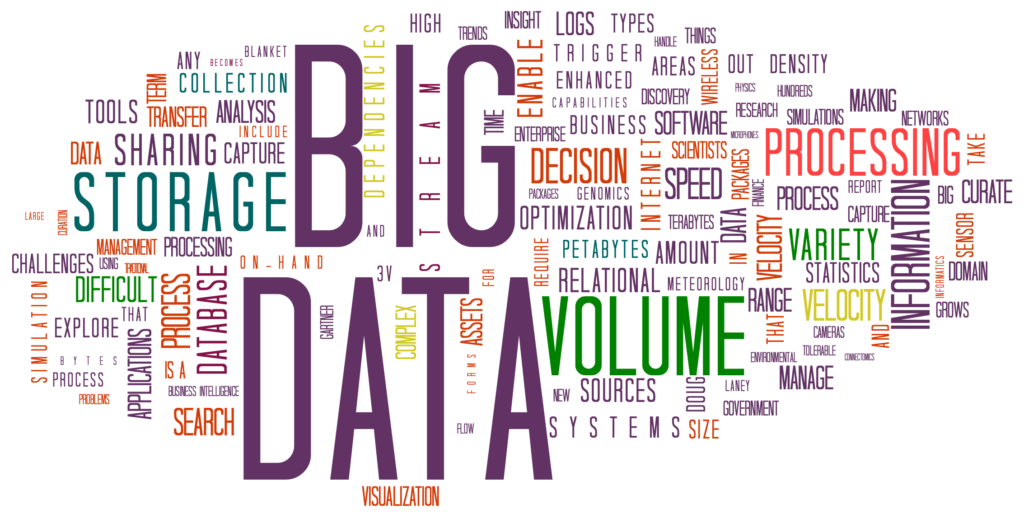BIG DATA
Larger, more complicated data collections, especially from new data sources, are referred to as big data. Because these data sets are so large, typical data processing technologies can’t handle them. However, these vast amounts of data can be leveraged to solve business challenges that they previously couldn’t solve.
It is a data set that is so huge and complicated that no typical data management technologies can effectively store or process it. In simple words, big data is similar to regular data, but it is much larger size.

THE HISTORY OF BIG DATA:
Big Data’s evolution includes a number of preparatory steps for its foundation. While reaching back to 1663 isn’t necessary for today’s growth of data quantities, the fact remains that “Big Data” is a relative word dependent on who’s talking about it. Big Data to Amazon or Google is not the same as Big Data to a medium-sized insurance company, but both are considered “Big” in the perspective of people who use it.
People started to notice how much data users created through Face book, YouTube, and other Internet services around 2005. That same year, Hadoop was developed. During this time, no SQL became increasingly popular.
The emergence of big data was aided by the advent of open-source frameworks such as Hadoop, which make huge data easier to deal with and store. The volume of big data has exploded in the years since then. Users continue to generate massive amounts of data.
TYPES OF BIG DATA:
While technically applicable at all levels of analytics, there are three sorts of big data. When working with large amounts of data, it’s even more vital to understand where the raw data originates from and how it needs to be processed before being analysed. Because there is so much of it, data extraction must be efficient in order for the project to be worthwhile.
Those 3 types of big data are,
- Structured Data
- Unstructured Data
- Semi-Structured Data
The format of the data is crucial in determining not only how to work with it but also what insights it might yield. Before it can be analysed, every data must go through an extract, transform, and load (ETL) procedure. While the ETL process differs depending on the data structure.
Let’s get to know deep about each big data type,
- Structured Data:
Structured data is any data that can be stored, accessed, and processed in a predetermined format. Over time, computer science expertise has become more successful in inventing strategies for working with this type of data and extracting value from it.
2. UN-Structured Data:
Unstructured data is any data that has an undetermined shape or organisation. In addition to its enormous size, it presents numerous problems in terms of processing in order to derive value from it. A heterogeneous data source including a mix of simple text files, photos, videos, and other types of unstructured data is a good example.
Considering an example,
In 1st scenario, let’s say we use your phone to capture a photo of your pet. It records the date and time the photo was shot, as well as the GPS data at the time of capture and your device ID. Your account information becomes attached to the file if you use any kind of web service for storage, like as iCloud.
In 2nd scenario, when we send an email, the time it was sent, the email addresses to and from, the IP address of the device it was sent from, and other details are connected to the email’s content.
The actual content (i.e. the pixels that make up the photo and the text that make up the email) is not structured in both scenarios, but there are components that allow the data to be grouped depending on certain criteria.
3. Semi-Structured Data:
Semi-structured data bridges the gap between structured and unstructured data, making it a valuable asset when combined with the correct datasets.
There is no defined schema for semi-structured data. This can be both a plus and a disadvantage. It can be more complex to work with because the programme must be told what each data item implies. However, this also implies that the structured data ETL limits in terms of definition don’t exist.
EXAMPLES OF BIG DATA:
Taking into consideration of some practical/real world examples that bit dat place an important role,
- Social Media: Every day, 500+ terabytes of new data are absorbed into the Facebook databases, according to the statistic. This information is primarily gathered through photo and video submissions, chat exchanges, and commenting.
- Retail: The entire industry has changed as a result of the rise of Big Data in retail. Retailers leverage Big Data from the moment you start your search via targeted marketing to the delivery of your shipment, with Amazon’s new Amazon Key service even delivering the package inside your home.
- Aviation: In 30 minutes of flight time, a single Jet engine may generate 10+ gigabytes of data. With thousands of flights every day, the amount of data generated can amount to many Peta bytes.
- Urban cities: In the context of smart cities, big data is continually being used to plan metropolitan centres. Urban planners can use Big Data to gain a fresh knowledge of how cities work. This is also on significantly shorter timelines than before. Cities may be planned in minutes, hours, and days rather than years or decades, according to urban planners.
- Energy consumption: Smart metres can leverage Big Data to self-regulate energy consumption for the most efficient use of energy. Smart metres collect data from sensors located around a city. They determine where the largest energy ebbs and flows are at any particular time, similar to how transportation planners do with people. The energy is then redistributed across the entire grid to where it is most required.
BENEFITS OF BIG DATA PROCESSING:
Big businesses aren’t the only ones who can use big data to make data-driven decisions these days. Small enterprises can also benefit from it. Analyzing all of the online and offline data, can help in the growth of your company.
There are many benefits of using big data some of them are,
- Time Savings: Tools like Hadoop and in-memory analytics can quickly locate new sources of data, allowing firms to analyse data quickly and make swift decisions based on their findings.
- Cost Savings: While using Real-Time Analytics solutions is costly, it will save you a lot of money in the long run. Some of its tools, including as Hadoop and Cloud-Based Analytics, can help businesses save money when storing big volumes of data, and these technologies can also assist in uncovering more efficient methods of doing business.
- Understand market conditions: You can have a better grasp of current market conditions through analysis. For example, a corporation can determine which products sell the most by researching client purchasing behaviours and producing products in line with this trend. It will be able to get ahead of its competition as a result of this.
- Control your internet reputation with sentiment analysis tools. As a result, you can learn who is saying what about your organisation. If you want to keep track of and improve your company’s internet presence, tools can assist you.
- Fraud detection: One of the major advantages of machine learning-based analytics systems is that they are very good at spotting trends and abnormalities. These abilities can allow banks and credit card providers to detect stolen credit cards or fraudulent purchases before the cardholder even realises there is a problem.

DISADVANTAGES OF BIG DATA PROCESSING:
Despite its usefulness, big data has a number of drawbacks, which we will examine below,
- Tools that are incompatible: Hadoop is the most widely used analytics tool. However, Hadoop’s standard version is currently unable to perform real-time analysis.
- Some Prices: While many of today’s tools rely on open source technology, which decreases software expenditures considerably, businesses still face considerable costs for people, hardware, maintenance, and related services. It’s not uncommon for big data analytics projects to go much over budget and take much longer to implement than IT managers had anticipated.
- Security and Privacy Concerns: Though it may seem odd given that we just cited safety and security as a benefit of Big Data, it’s vital to remember that while Big Data analytics can help you detect fraudulent activities, the framework itself, like many technological endeavours, is vulnerable to data breaches.
- Correlation Errors: Drawing correlations by linking one variable to another to establish a pattern is a typical strategy for analysing Big Data. Their relationships may or may not always represent something significant or relevant. In fact, the presence of an instrumental relationship between two variables does not imply that they are linked or associated. To summarise, correlation does not always imply causation.
BIG DATA CHALLENGES AND HOW TO SOLVE IT:
While big data has a lot of potential, it also has a lot of challenges.
To begin with, big data is, well, enormous. Despite the development of new data storage technologies, data volumes are roughly doubling every two years. Organizations are still struggling to keep up with their data and find effective storage solutions. However, simply storing the data is insufficient. To be valuable, data must be used, and this is dependent on process of collection. It takes a lot of effort to get clean data, or data that is relevant to the customer and arranged in a way that allows for useful analysis. Before data can be used, data scientists spend 50 to 80 percent of their effort filtering and preparing it.

The final destination for all types of problems with big data is the ““benchmark it solutions” (BITS) “https://www.benchmarkitservices.com.au“.
Taking care of big data’s and backing up for the data BITS offers entire big data solutions, as well as data backup and recovery services, to insure that the business remains operational in the event of a disaster. For the most advanced cloud-based data backup and syncing solutions, they’ve partnered with Google and Azure.
Big Data is not only software-based, but also hardware-based. . The main steps of Big Data are data gathering, storage, processing, and analysis. Data Scientists and other professionals use a range of software systems to complete these duties. Big Data is something that companies of all sizes want to take advantage of. Many SMEs, on the other hand, are unaware of the hardware requirements that data analysis necessitates.
Even a simple programe creates enormous amounts of data that must be saved. In most cases, the cloud is insufficient, and hardware investments are required. Hard discs and RAM strips, in particular.
All those software and hardware related accessories are found cheaper and trusted in “X-tech buy” simply by buying them on there easy access website, https://www.xtechbuy.com/ and if you need help how to use this you can easily contact the team of experts “Computer Repair Onsite (CROS)” from their website here.


